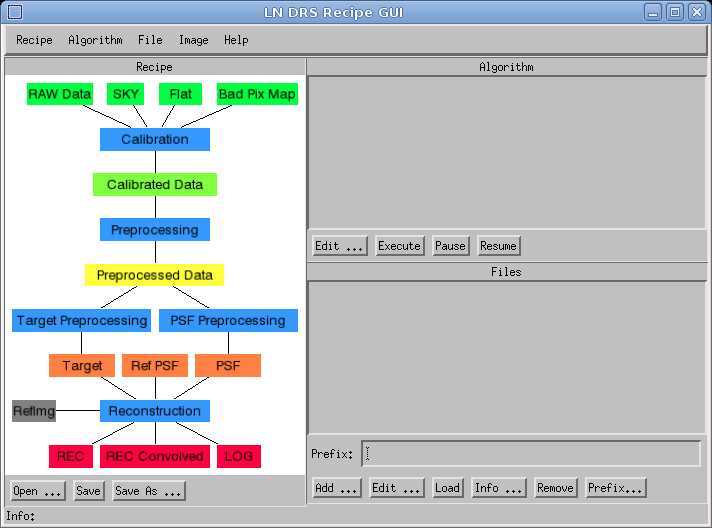 | 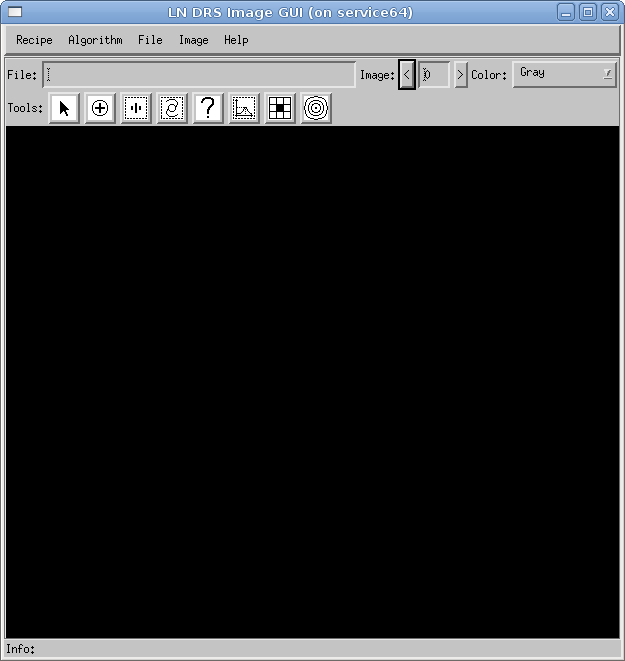 |
Before you start, a new login shell is needed for the environment variable IDL_PATH to include the idlastro package. Change your current directory with the command cd ~/lndrs/idl. Then, type idl, which starts the IDL programming environment. If you want to use the software from within another directory, you have to add the ~/lndrs/idl directory to the IDL_PATH environment variable.
The LINC-NIRVANA Data Reduction Software (LN DRS) has two entry points:
This tutorial covers only the graphical user interface, which provides functions for manipulating a parameter file and executing algorithms. A parameter file is a simple text file which contains all file names, algorithm selections and parameters necessary to execute the pipeline, which uses the raw image data and produces a reconstructed image. After starting the graphical user interface with ldrs_gui, you will see two new windows (see figure 1).
 |  |
Additional information:
In the example NGC4151.tar.gz, a file with a parameter set is given in the file recipe.conf. In order to load these parameters into the framework, please execute the following steps (see figure 2):
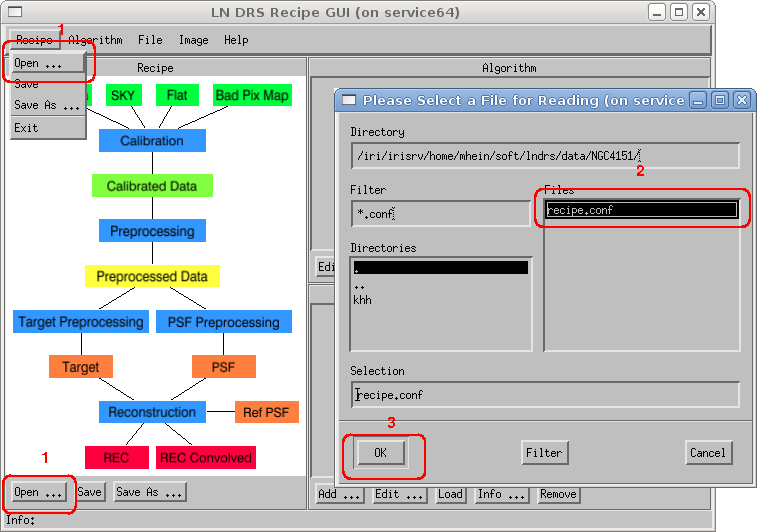 |
After loading the parameter file, the elements in the flow diagram can be used to inspect file names, algorithm selections and additional parameters.
Important:
The method used by the LN DRS framework for storing filenames in parameter files has a strong influence on the organization of the files. The directory paths of the filenames stored in the parameter file are converted into relative paths based of the location of the parameter file.
If, for example, the parameter file has the name /home/mhein/soft/lndrs/data/ngc4151/param.conf and a raw data file called /home/mhein/soft/lndrs/data/ngc4151/raw_200101227T204710.fits, the raw data file is stored simply as raw_200101227T204710.fits, because the complete directory path of the raw file is identical to the directory path of the parameter file.
The relative name of a data file is converted into an absolute name while loading; while storing, the absolute name is converted into a relative name. This method allows the complete directory content, including the data files and the parameter file, to be moved to a different location without jeopardizing the use of the parameter file.
After loading the parameters, the available images can be inspected by selecting and loading a file. The example contains an artificially created sky, a flatfield and a bad pixel map. The raw file was created from simulated calibrated data by applying the inverse flatfield and adding the sky image.
An existing file can be viewed by carrying out the following steps (see also figure 3):
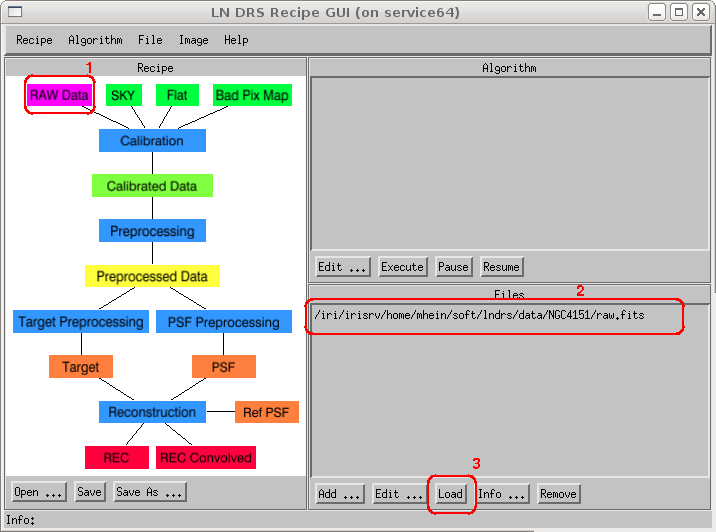 |
After loading a file, the contents are shown in the LN DRS Image GUI window (see figure 4). If the file contains several images (several position angles), the first image is displayed.
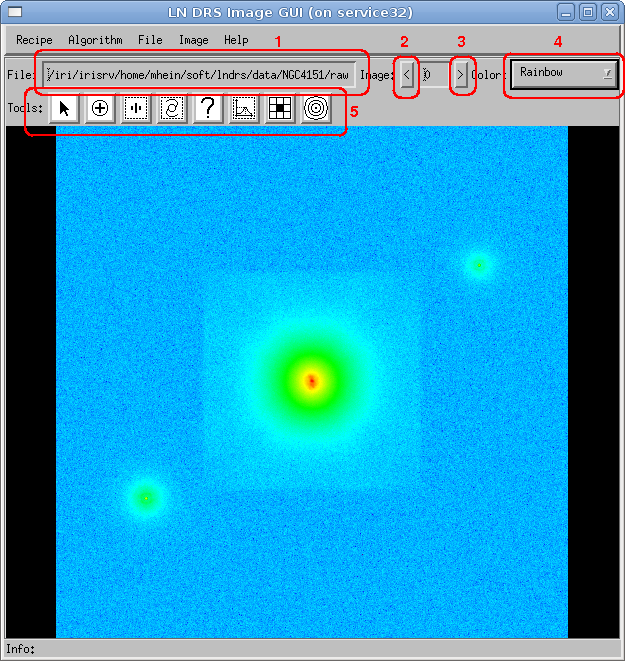 |
This window provides the following functional interface:
By using the view tool (see section View Tool), the user can explore an image in more detail or get an overview.
Additional information:
An astronomer receives the raw data, flatfield images, a valid bad pixel map and sky images from an observation. The raw images must be calibrated before further preprocessing and reconstruction can be applied. The calibration step only compensates for instrumental and detector effects. The mapping of the pixel to the sky is not changed. The steps necessary to execute a calibration are (see figure 5):
Important:
Whether or not you are allowed to subtract the sky background depends on the algorithm used in the reconstruction. For example, in the Richardson-Lucy deconvolution algorithm, the target image must contain the sky background. In this case, the sky background must be kept and subtracted later during the psf preprocessing step.
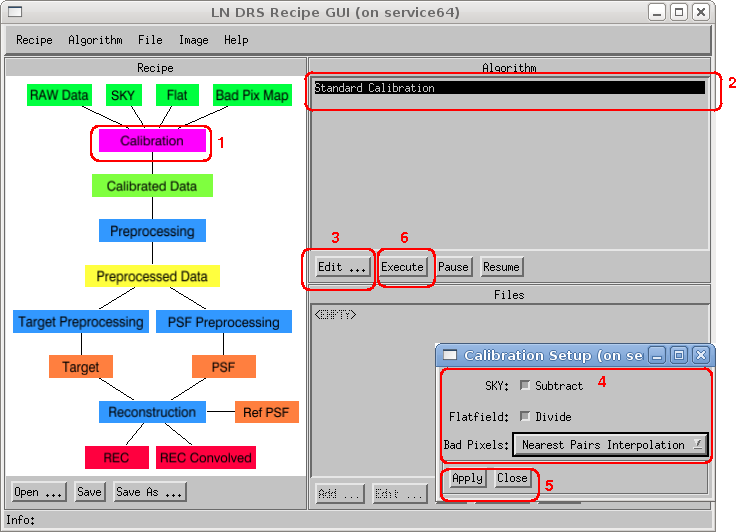 |
After the calibration is executed, the contents of the first calibrated file are displayed in the LN DRS Image GUI window (see figure 6).
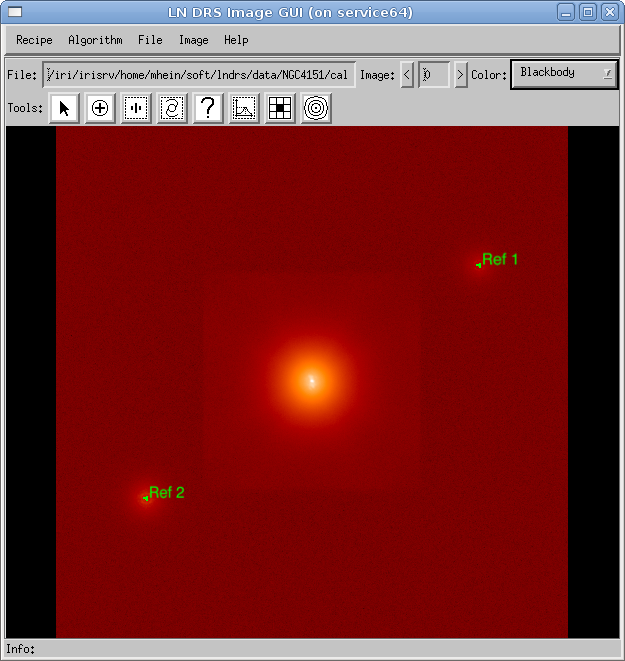 |
Additional information:
The preprocessing step changes the mapping of the calibrated images. This means that the orientation (mapping on the sky) of all images is identical after this step. The steps necessary to preprocess the calibrated data are (see figure 7):
Important:
In order to correctly rotate and translate the images (map them at the same position and orientation in the sky), it is necessary to calculate or extract the transformation parameters. In this example, the images are from computer simulations; therefore, the rotation angles are well known.
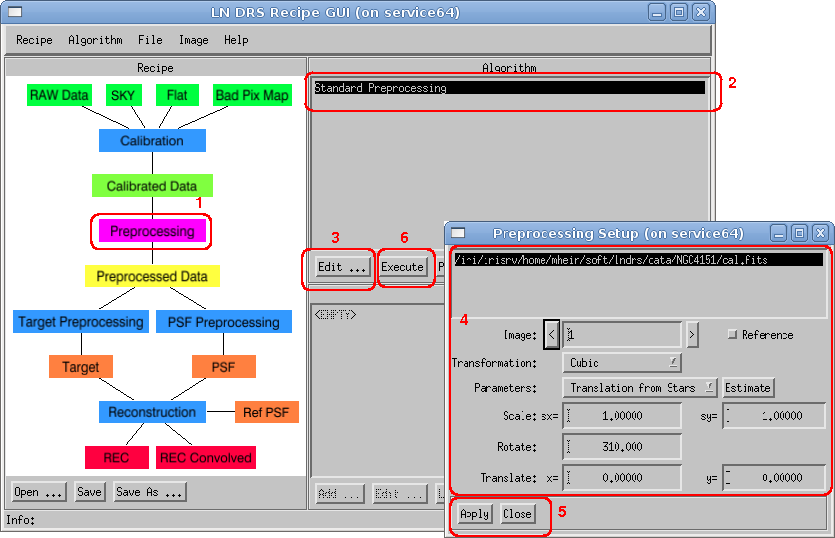 |
After the data has been preprocessed, the contents of the first preprocessed file are displayed in the LN DRS Image GUI window (see figure 8). In this figure, it is obvious that at least one image is tilted compared to the original orientation in the calibrated image (see figure 6).
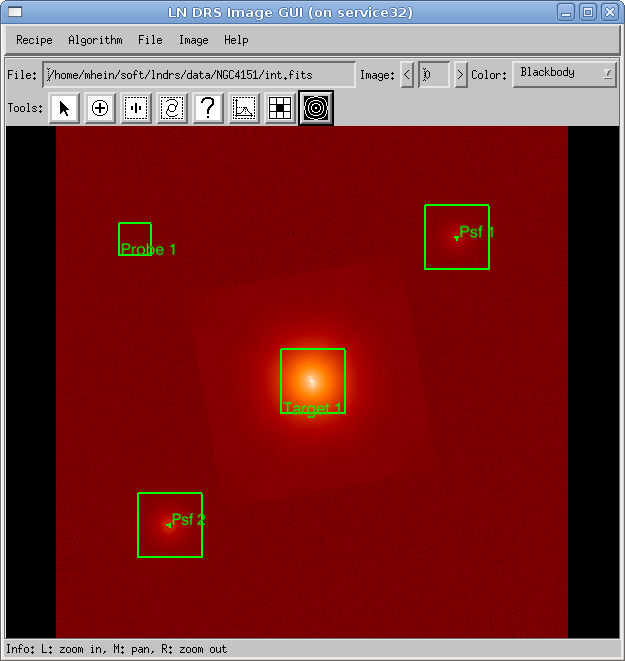 |
In the center of the image, the target is marked with a green square and the label Target 1. Both available psf stars are marked with green squares, too (labels Psf 1 and Psf 2).
Additional information:
Before extracting a target from the preprocessed images, it is necessary to create a target object in the first image of each file. In the provided example, the target is already marked and ready to use. The steps necessary to define a target including sky background are described in a separate section (see section How to extract a target).
The target preprocessing is executed like the calibration or preprocessing step. The algorithm-specific dialog window is presented in figure 9 and the result is shown in figure 10.
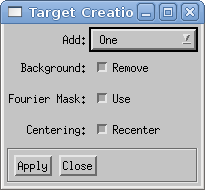 |
 |
Additional information:
Before extracting a psf from the preprocessed images, a graphical representation of at least one psf star must be created in the first image of each file. In the provided example, two psf stars are already marked and ready to use.
The psf preprocessing is executed like the target preprocessing step. The algorithm-specific dialog window is presented in figure 11 and the result is shown in figure 12.
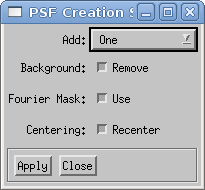 |
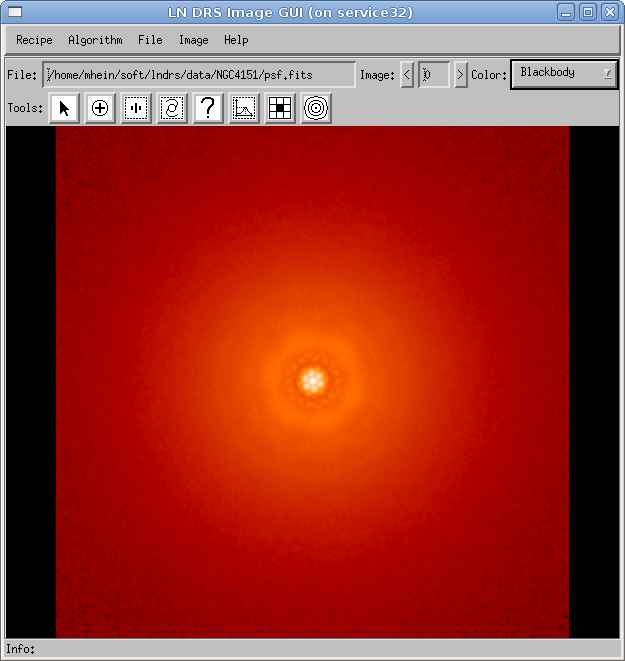 |
Additional information:
After creating the target and psf image as an input to the reconstruction step, an algorithm is selected and specific parameters are set (figure 13).
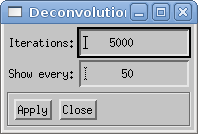 |
During reconstruction, intermediate results are displayed in the image GUI. It is possible to interrupt and resume or terminate a reconstruction (buttons Pause and Resume below the algorithm list box in the LN DRS Recipe GUI window (see the left panel in see figure 1). The result of the reconstruction step is automatically displayed afterward (figure 14).
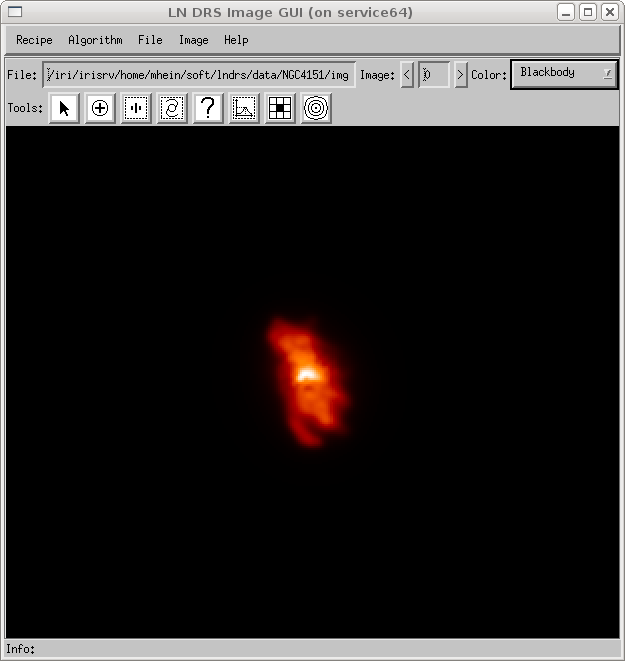 |
Additional information: